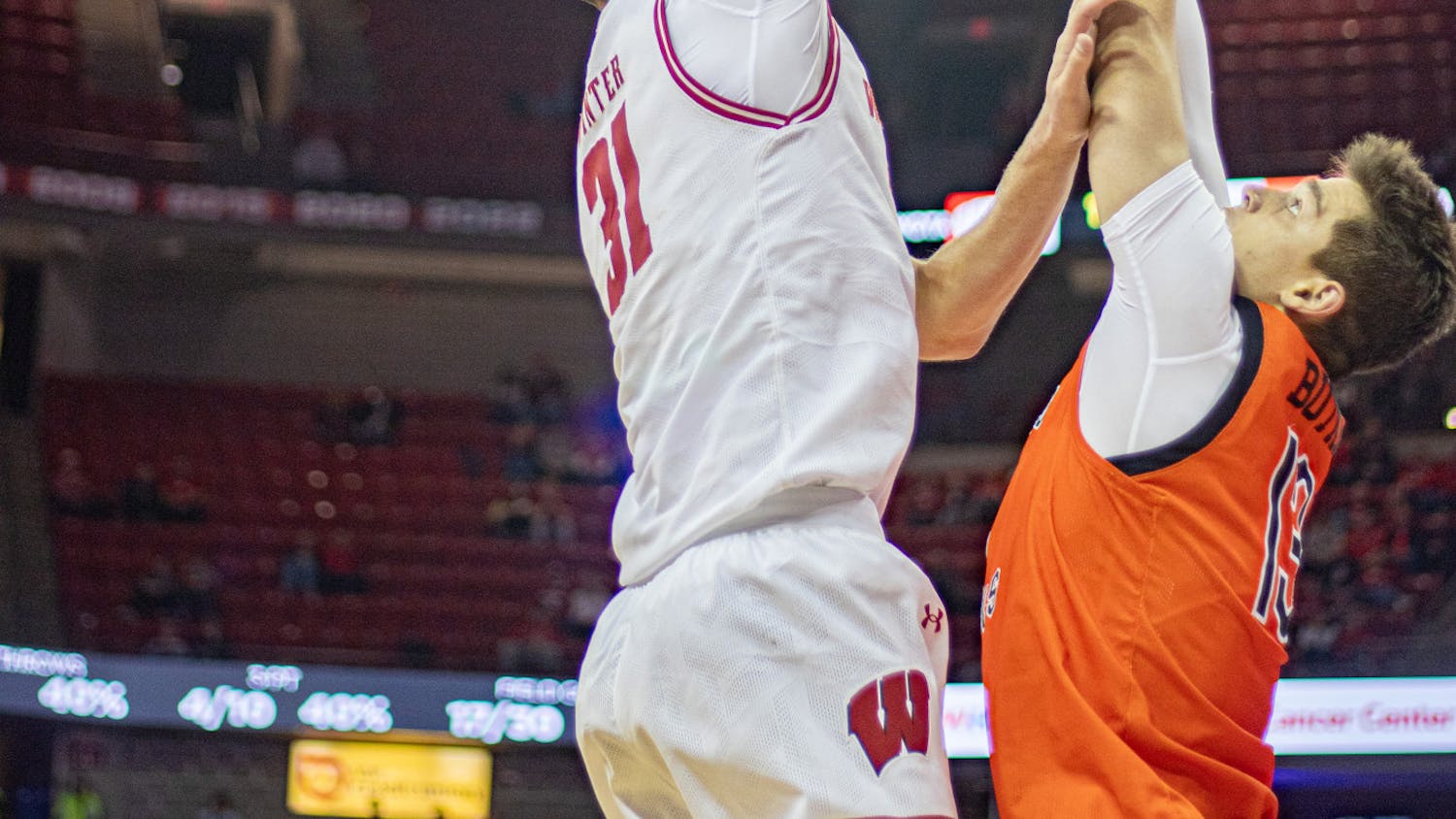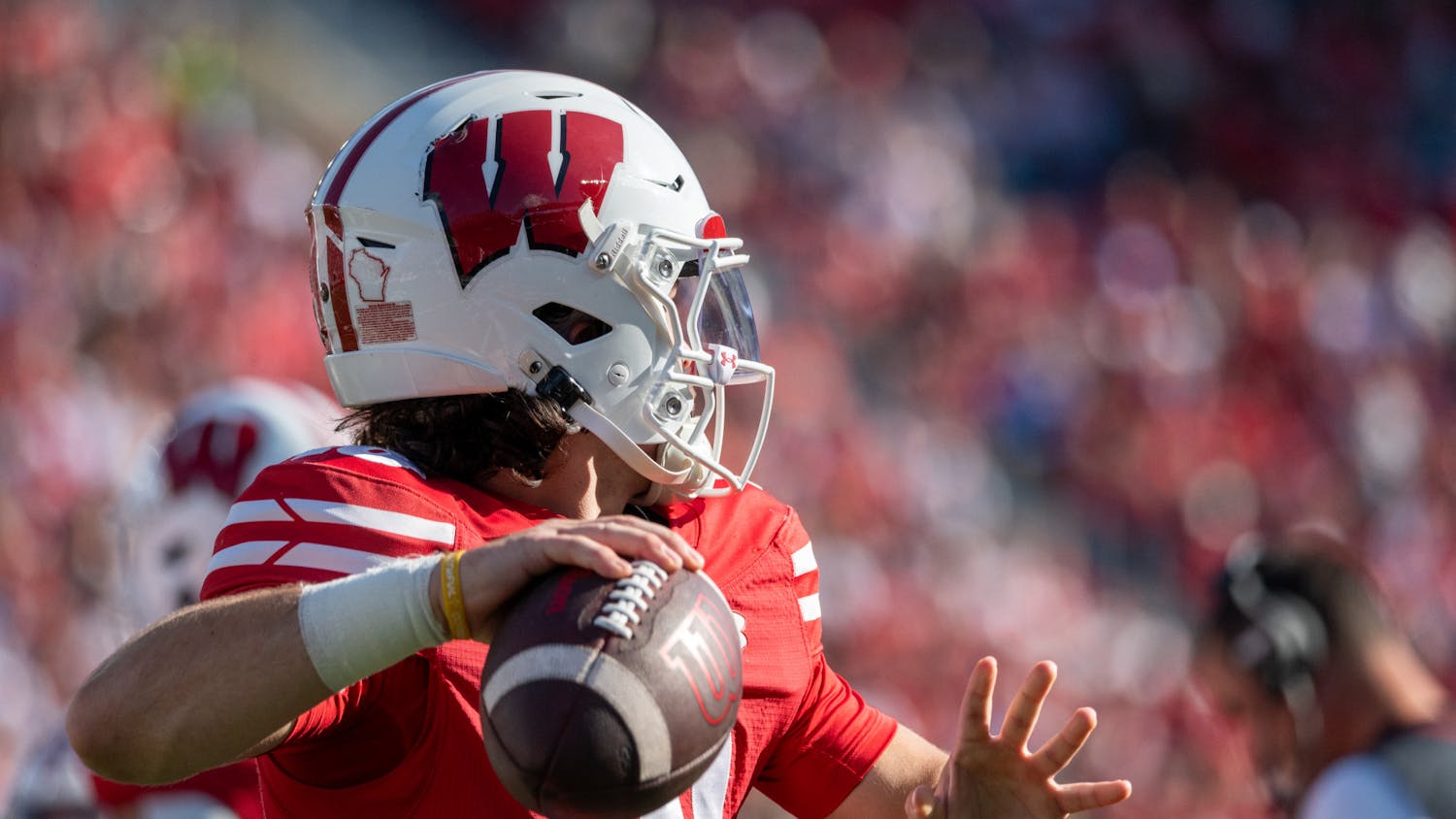16: wins to start the season
Wisconsin began the season as well as one could reasonably expect, setting a school record in consecutive wins to start the season and featuring what RPI ranked as the best non-conference run in the country. Ranked as high as No. 3 in the AP rankings, Wisconsin showed early that it could beat the best in the country and foreshadowed its deep tournament run.
43: Frank Kaminsky’s points against North Dakota
Speaking of strong performances that foreshadowed a deep tournament run, Frank Kaminsky. The guy averaged 4.2 points per game in 2012-’13 and promptly showed he was ready to take over the frontcourt with a school-record 43 points against North Dakota in November. After that, he slowly filled into a reputation as one of the most versatile big men in the country, crescendoing with a 28-point, 11-rebound game against No. 1 seed Arizona in the Elite Eight that will go down as one of the best individual performances of the tournament.
73.5: points per game
Coming into the season, the question for the Badgers was how good their offense could be. The 2012-’13 team was one of the best defensive teams in the country, but also faced endless problems in creating scoring opportunities. Center Jared Berggren and forwards Mike Bruesewitz and Ryan Evans, strong defensive players but poor when it came to scoring, were replaced by Frank Kaminsky, Sam Dekker and Josh Gasser. All three players were definite offensive upgrades and contributed to the highest team-scoring average of head coach Bo Ryan’s career with the Badgers.
1.135: points per possession
While 73.5 points per game is good for typically defensive-minded Wisconsin, it’s still only decent when compared nationally. Where Wisconsin has always shone, and particularly this year, is in points per possession, where it was seventh in the country. While Wisconsin’s slow pace leads to lower scoring totals, it doesn’t hurt UW, as it does more with each offensive possession than all but a handful of teams. Moving the ball and waiting for a good shot is the basis for Ryan’s offensive strength.
332: possessions per game rank
“Wisconsin plays so slow, it’s so boring.” Every Badger fan has heard, and possibly said, that statement at some point in their fandom. As more and more fans jumped into the season during the Badgers’ Final Four run, it became a common refrain among fans using last year’s Wisconsin notes. Wisconsin plays slow, but you can’t really say it’s boring. Like some of soccer’s elite teams, Wisconsin was able to move the ball around the floor in ways that seemed telepathic at times. If that idea is boring to you, go entertain yourself with some tape of Indiana basketball.
8.1: turnovers per game
Gasser’s addition to the rotation led to the Badgers rolling out lineups frequently featuring three guards. While this created some interior defensive liabilities due to height limitations, putting three players on the floor with point-guard experience meant that the ball was going to move on offense and move well. Only Georgia State of the Sun Belt Conference had fewer turnovers per game than the Badgers’ 8.1.
15: personal fouls per game
One of the biggest stories in college basketball coming in to the season was the change in rules regarding hand checks and charges. Several analysts theorized that Wisconsin’s reputation as a physical defensive team could cost the Badgers. This didn’t happen. UW’s 15 personal fouls per game was good for second fewest in the country behind Michigan.
4: KenPom offensive rank
For years, Wisconsin’s efficient offense and ability to crush bad teams made it a frequent top team in Ken Pomeroy’s computer rankings. Despite a tweak from Pomeroy before the season that seemed to directly address this, the Badgers still finished as the No. 6 team with the fourth-ranked offense. This ranking matched the eye test that spectators saw with the Badgers’ impeccable ball movement, good decisions and accurate shooting.
9.6: opponent assists per game
The drop-off in defense from last year was pretty much unavoidable. You don’t remain one of the best defenses in the country by losing three starters. But there was still one thing Wisconsin did as well as anyone: staying with its opponent. While ball screen and interior defense suffered, Wisconsin matched most moving offenders step-for-step, and this showed as all four of UW’s tournament victories were over teams in the top 60 in assists per game.
8.8: lowest points per game by a starter (Josh Gasser)
When Kaminsky broke out as a star with his games against Baylor and Arizona, many fans from outside the Big Ten were led to believe the Badgers were a one-man team, which was just not true. Every starter on the team was a capable shooter, and their ball movement meant that opportunities were going to be spread out. Even though Gasser scored the fewest points, he led the team in 3-point percentage and was second in free-throw percentage.
74.5 percent: defensive rebounding percentage
One of the trade-offs of a three-guard lineup is that, obviously, you’re going to have a smaller team, and that means fewer rebounds. Yet Wisconsin’s 74.5 percent ranked among the top 25 in the country. They were able to do this thanks to constant man defense, which by design puts defenders closer to the basket than their offensive counterparts, and by forgoing pretty much any fast break opportunities. By not sending a guard or two down the court to stretch the floor, Wisconsin sends five players at the basket and makes up for its below-average size.
1: different starting lineup this year
Traevon Jackson. Ben Brust. Josh Gasser. Sam Dekker. Frank Kaminsky. That’s the list of players who have started a game this season for the Badgers, the absolute minimum. Thanks to consistent play from starters and no major injuries, Badger fans never had to get used to another starter, which is an incredible achievement when you think about it.
6: regular season conference champions beaten
Wisconsin’s claim to fame this season was that it simply beat the good teams: Michigan (the Big Ten champion), Florida (the SEC champ), Virginia (ACC), Saint Louis (Atlantic 10) and Green Bay (Horizon League). The Badgers beat all of those teams and rode those wins to a No. 2 seed despite their reputation as a tournament underperformer. These wins also gave the Badgers preparation for facing the unfamiliar teams in the tournament, leading them to add Arizona, the Pac-12 champ, to their victory list.
0: Final Fours under Bo Ryan before this season
Marshall Henderson, the 3-point dagger, 30 feet from the basket: Wisconsin’s demise in the tournament last season read like a Clue solution. As Ole Miss stomped its way over Wisconsin in the round of 64, the whispers intensified, “Bo can’t win in the tournament.” Whether you believed it or not, it was frustrating for Badger fans, since everyone was saying it. Well, who’s saying that now? They might have lost to Kentucky, but the 2013-’14 Wisconsin basketball team will go down as one of the greatest squads in program history. It proved the Wisconsin way works, that a slow pace could still be lethal. As we move onto next season, get ready for a lot more people to pick the Badgers to advance further than any would have thought reasonable this time one year ago.
Unless noted otherwise, team stats come from teamrankings.com and player stats from ESPN.com.





